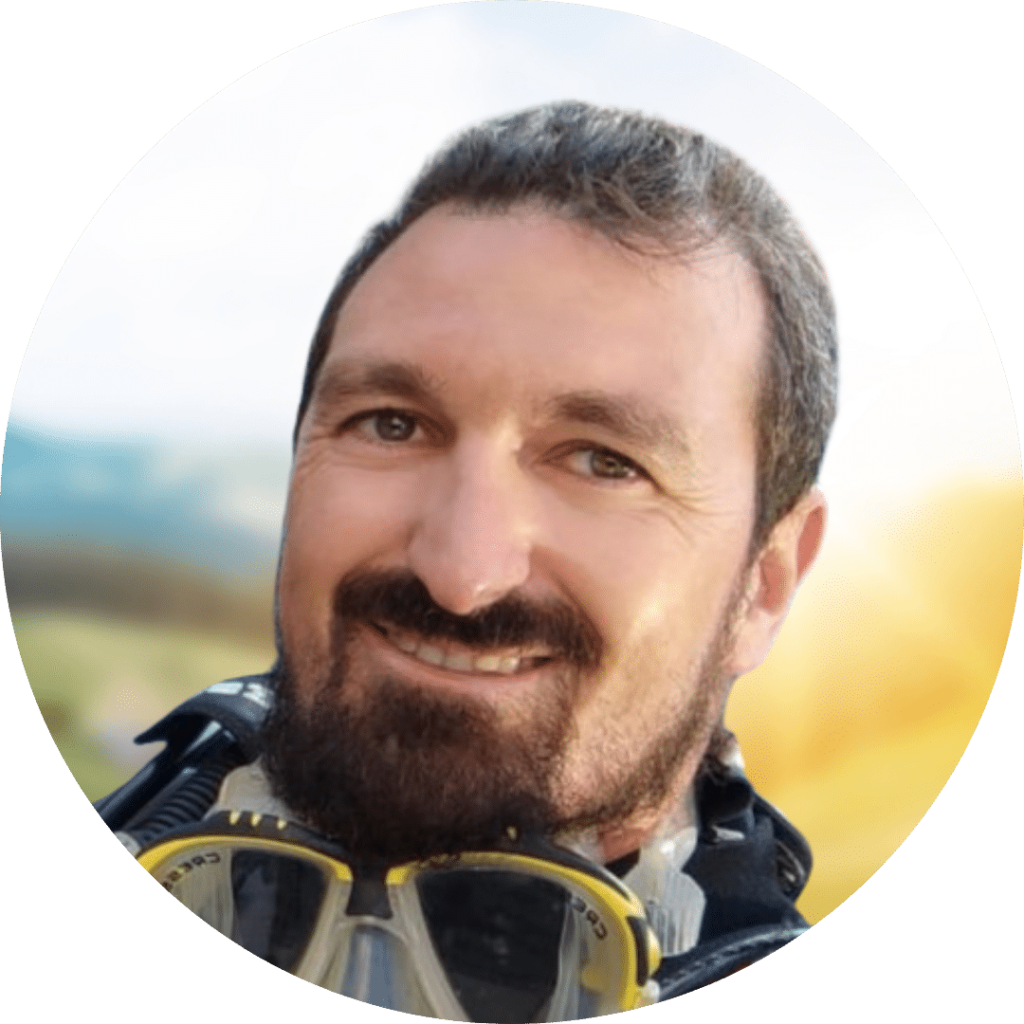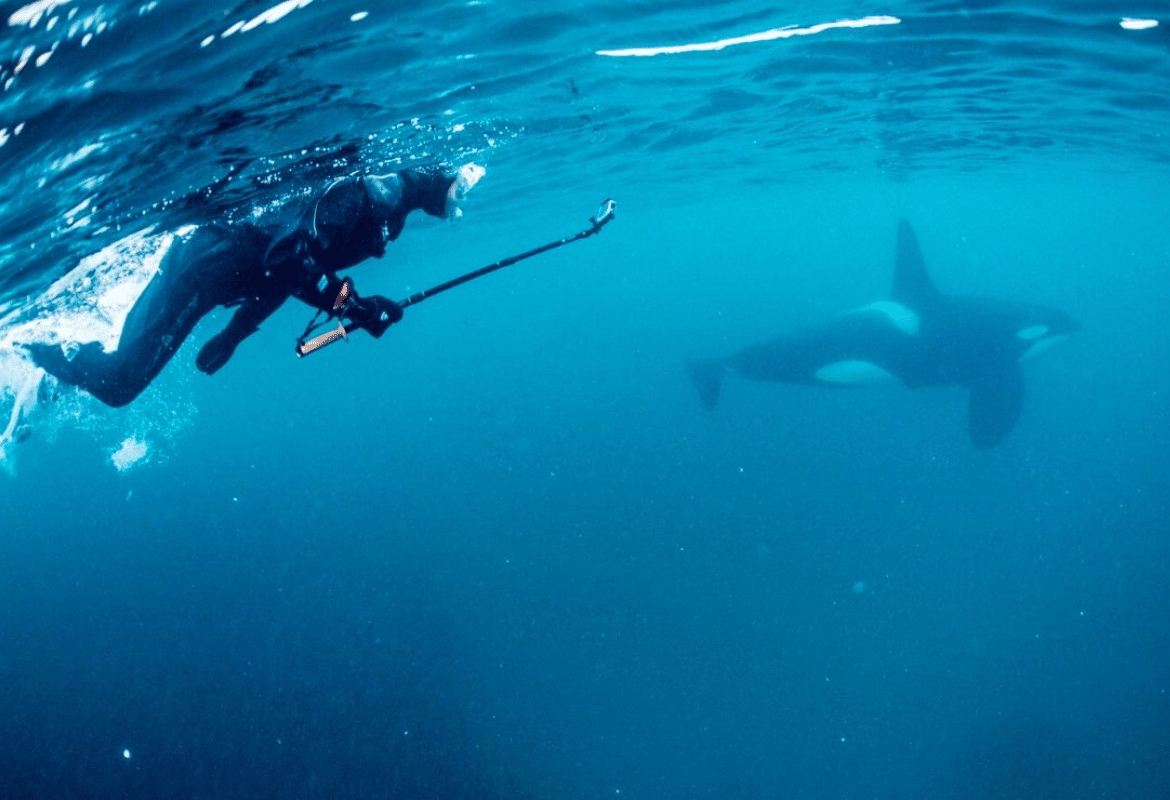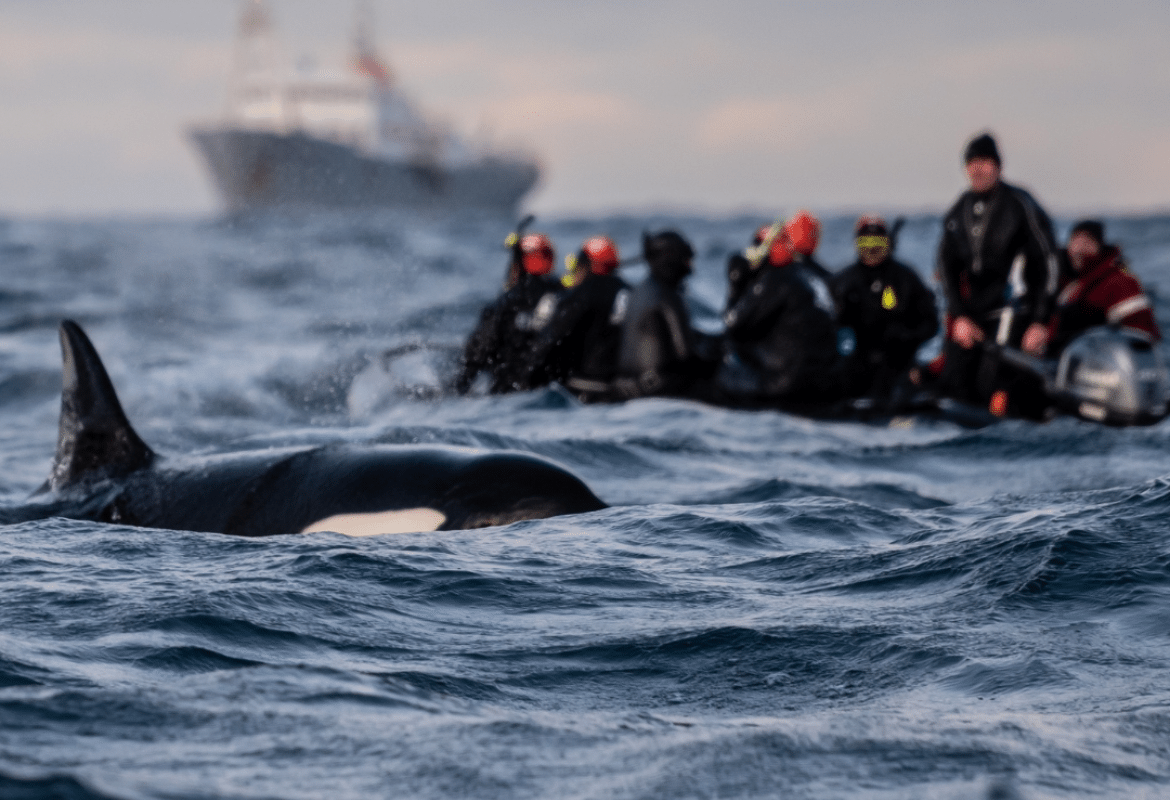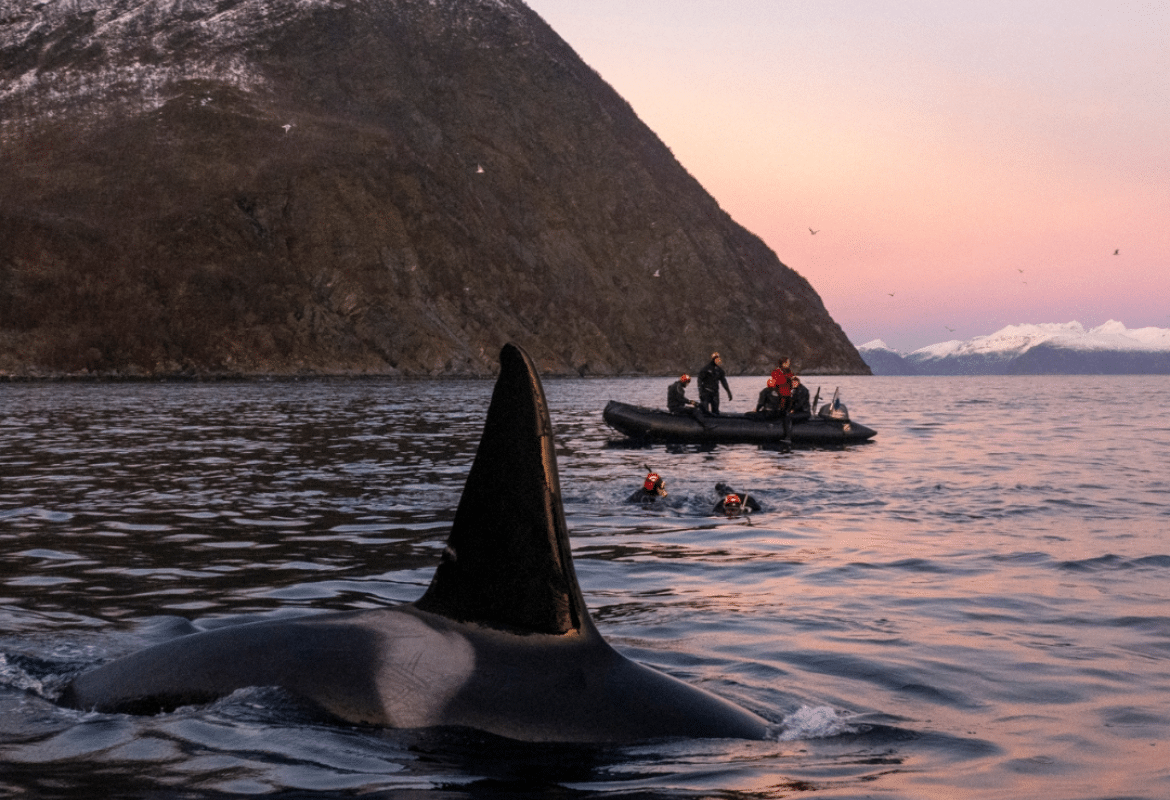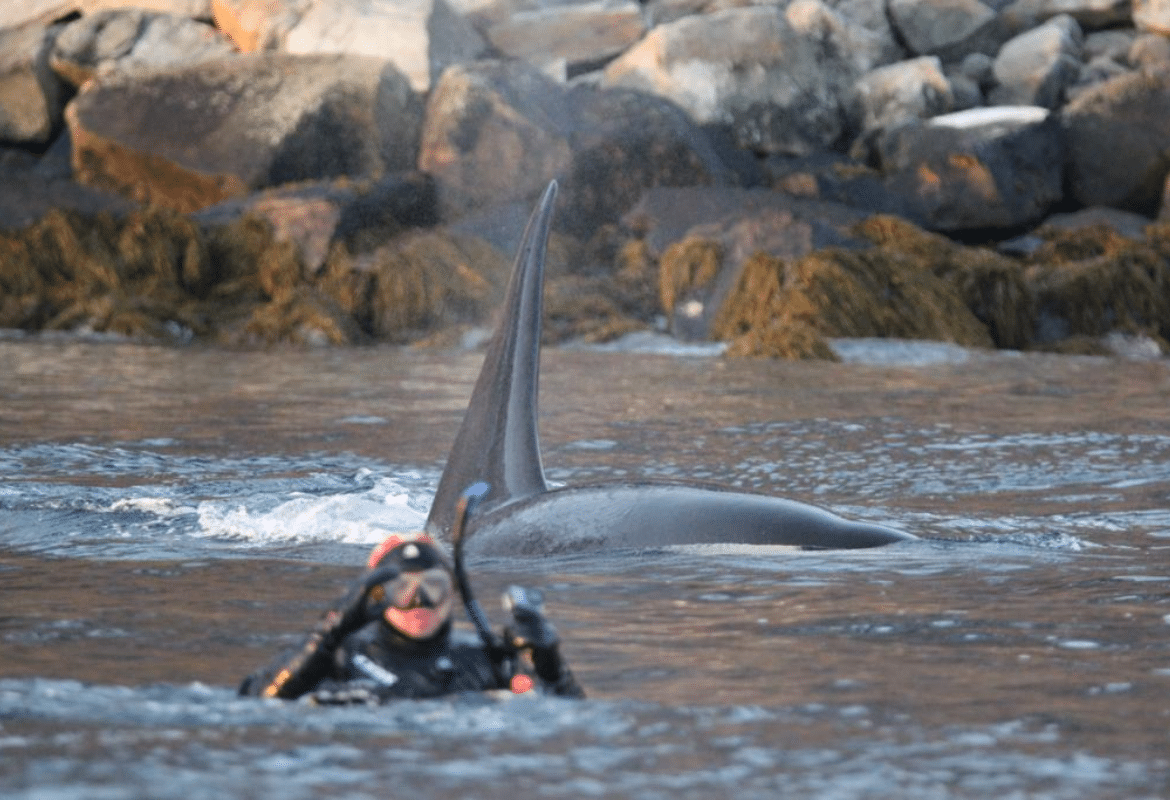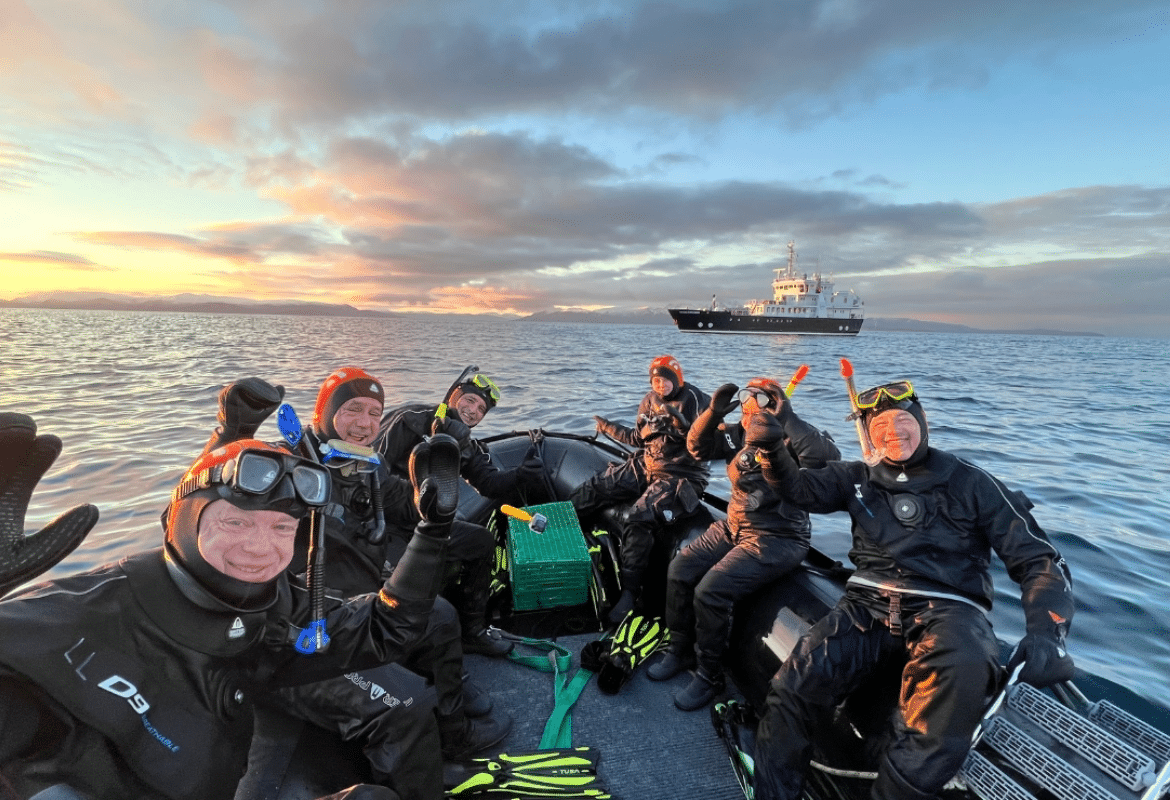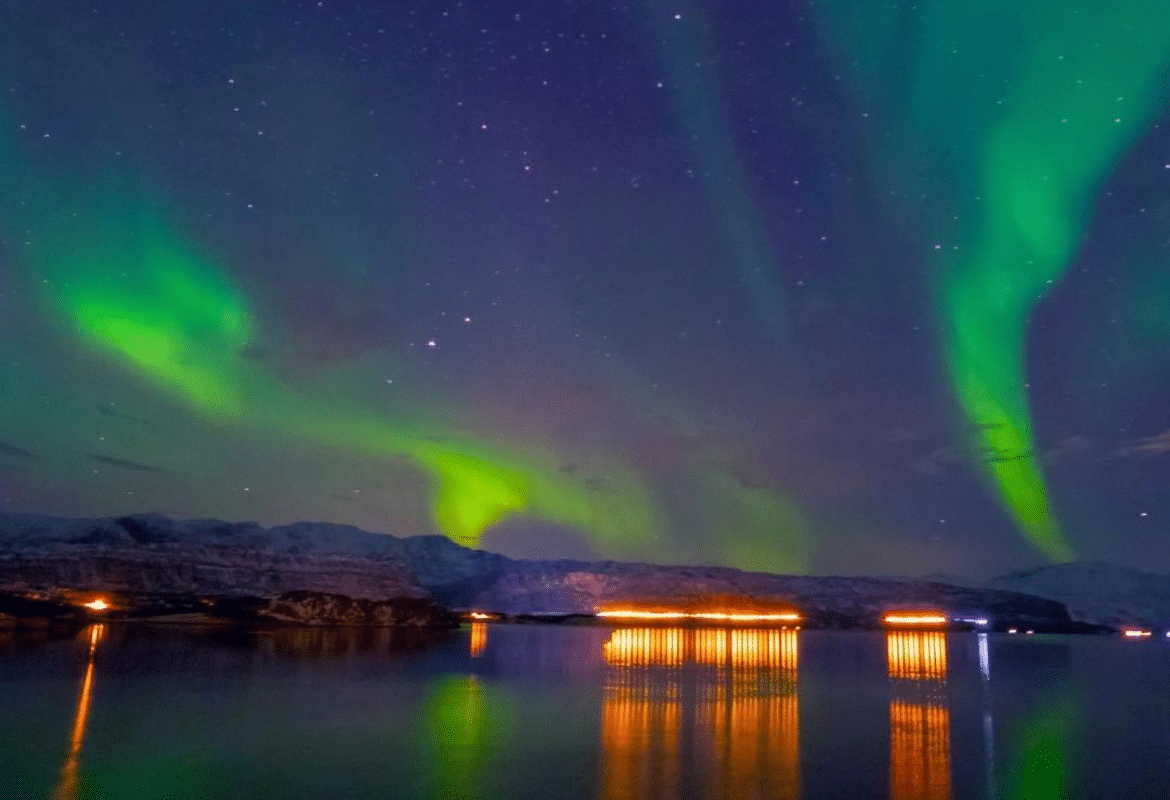Discovering Antarctica: expedition cruise with polar diving, whale watching and land excursions
Explore impressive ice landscapes, meet special animals like penguins and whales, and enjoy unique activities like polar diving and land excursions. An unforgettable expedition full of nature, adventure and special experiences awaits you.
Travel period
Features
Starting from
An unforgettable expedition to Antarctica: polar diving and land excursions
Are you up for an extraordinary voyage of discovery to one of the most remote and fascinating areas on Earth? An expedition to Antarctica offers a unique opportunity to explore the rugged and impressive landscape of this continent aboard the comfortable ship Hondius.
Timeesn this journey you will see huge icebergs, mighty glaciers and vast snowfields. You will meet extraordinary animals, such as humpback whales, penguins, fur seals and rare seabirds found almost nowhere else.
Besides observing wildlife on board and on land, you can make it as adventurous as you like. Walks along the coast bring you closer to the landscape and animals, you can kayak or even camp on the ice. One of the most special activities is polar diving. You have the unique opportunity to discover Antarctica’s underwater world, with spectacular ice formations, light incursions and surprisingly abundant life underwater.
Polar diving, by the way, is optional. If you’d rather not get in the water, there are plenty of other things to see and do. The trip is for divers and non-divers alike.
The trip is accompanied by experienced guides and specialists who give daily lectures on the nature, environment and history of the area. Thus, this expedition combines nature experience with depth and knowledge. Every day brings new adventures, boredom does not exist here!
Best travel time for a diving vacation to Antarctica
The best travel time for an expedition to Antarctica is from November through March, the Antarctic summer semester. During this period, temperatures are relatively mild and there is plenty of daylight, sometimes as much as 24 hours of sunlight. The sea ice is at its minimum, making landings easier. January and February are the best months for spotting whales and other active marine life.
Requirements to participate in the polar dives
Drysuit certification is required to participate in the dives, as well as a minimum of 30 logged dives with a drysuit. A check dive is conducted prior to the dive to verify that equipment is functioning properly and that you are comfortable in the cold water. Check out all the answers about polar diving at the bottom of this page in the frequently asked questions.
Average Temperatures
Drysuit advice for diving in Antarctica
![]() Diving in a drysuit is necessary here. You will also need gloves and a hood. You can read exactly what you need to stay warm in the waters of Antarctica at the bottom of the page under Frequently Asked Questions.
Diving in a drysuit is necessary here. You will also need gloves and a hood. You can read exactly what you need to stay warm in the waters of Antarctica at the bottom of the page under Frequently Asked Questions.
What will you experience on this diving vacation?
View itinerary here
Day 1 | The beginning of the journey at the end of the world
The trip begins with a departure from Ushuaia, in Argentina. It is the southernmost city in the world and is also called the end of the world. The city has its own airport to which you can fly, but you can also start the trip earlier with a tour of Argentina or Chile, for example.
In the afternoon you will board the m/v Hondius, where you will stay for the next 10 nights. The ship sets sail this very day and sails through the Beagle Channel toward Antartica. It is a beautiful area with rugged mountains.

Day 2 & 3 | Through the Drake Passage
For the next 2 days on the Drake Passage, you can lightly experience sea life from the perspective of the first polar explorers: a brisk breeze, rolling waves and possibly already a whale suddenly appearing and showing a breath of air. After the Antarctic Convergence – Antarctica’s natural demarcation formed where cold northward ocean currents meet warmer sub-Antarctic currents – we find ourselves in the “Circum-Antarctic Upwelling Zone.” Not only marine life but also bird life changes from this point on: several albatross species and petrels show up quite suddenly, as do Cape pigeons and Southern petrels. Near the South Shetland Islands, the first icebergs come into view.
Day 4 to 7 | Exploring Antarctica
These days you will explore Antarctica. Weather conditions permitting, you will go ashore daily by zodias. It is a landscape full of gray rock peaks with thick layers of sneew, tower of broken blue-white ice and also surprisingly many animals that live in these cold conditions. You will reach Gerlache Strait, one of the most beautiful areas of Antarctica.
If you choose polar diving, you will also go diving these days. It always depends on the weather conditions, but the goal is to make 2 dives a day. You make 1 day in the morning and 1 in the afternoon. It is surprisingly light underwater: the light is beautifully reflected by the white of the snow and there are more colors underwater than you probably expected beforehand. Underwater you can also encounter nudibranchs, crabs, sea butterflies, jellyfish, shrubby horsetails, sea hedgehogs and starfish. With a little luck you will even dive with penguins and seals! It is an absolutely unique experience to dive in among the ice floes.
In addition, these are the places (possibly) visited during the days in Antarctica:
- Danco Island – Activities on this almost entirely ice-covered island are focused on the Gentoo penguin colony located on the island. Weddell and Crab-eater seals are often on the shore here.
- Neko Harbour – Here you get the chance to step onto the Antarctic continent itself – an epic landscape of giant glaciers and carved, snow-covered cliffs.
- Paradise Bay – The next destination takes you to paradise: Paradise Bay. It is so named because of its unparalleled beauty. Here you will board the Zodiac for a cruise in the iceberg-strewn bay, where seals and whales often show themselves.
- Port Lockroy – After you sail through the Neumayer Channel, you can visit the old Bristol research station Port Lockroy on Goudier Island. Today it is a museum and post office. Near the museum is Jougla Point, where Gentoo penguins and Imperial Cormorants breed.
Optionally, you can also camp in Antarctica. You will then sleep in the open air, under the stars. A unique experience that you probably only do once in a lifetime. Feel free to ask us about the possibilities.
Day 8 | Exploring the South Shetlands
The volcanic South Shetland Islands are very windy and often shrouded in fog and mist, but it is definitely worth going ashore here. Thus, there is a great variety of flora (mosses, lichens and flowering grasses) and fauna, such as Gentoo penguins, Chinstrap penguins and Southern giant petrels.
Deception Island is a so-called subduction crater, connected to the sea through a narrow opening, creating a natural harbor for ships. The ship ventures into the crater via the spectacular Neptune’s Bellow. Here in a volcanic lunar landscape you will find an abandoned whaling station, thousands of Cape pigeons, many Kelp Gulls, Great skuas and Antarctic terns.
Wilson petrels and Black-bellied petrels have nests in the ruins of the abandoned whaling station in Whalers Bay. Penguins and seals often visit the geothermally heated beaches.
Alternatively, Half Moon Island may be visited. Here there is a large Chinstrap penguin colony and Weddell seals are often on the shore near the mostly unmanned Argentine station “Camara.
Day 9 & 10 | Northward toward the Drake Passage
This day the voyage heads back toward Ushuaia, again through the Drake Passage. The exact time of departure from Antarctica depends on the weather forecast and sea conditions.
Along the way, you will again encounter the many seabirds that you were also able to spot a few days ago.
Day 11 | End of the special trip
On day 11 you will arrive back in Ushuaia. Immediately after checking out and leaving the ship you will be transferred to the airport.
By the way, there is much more beauty to discover in this remote, rugged area. You are already in the middle of Patagonia and there is much beauty to discover in this region. If you travel directly back home, the trip will take about 2 days before you land back in Europe.
Highlights of this trip
What can you expect from the underwater world in Antarctica?
Diving among the ice floes
Polar diving lets you see a fascinating side of Antarctica that few people experience. You will dive along the underside of icebergs and between ice floes in crystal clear, ice cold water. The contrast between silence, light and ice is impressive. Underwater you may encounter penguins, fur seals and even the rare False Fulmar. This activity is suitable for experienced divers looking for adventure and a unique look under the surface of the white continent.
On land in Antarctica
Going ashore in Antarctica, for example at Paradise Bay, is a unique experience. Travelers set their first foot on the pristine ice and hike among impressive glaciers and majestic mountains. Here they get close to penguins, seals and other wild life that calls this remote world home. The silence, spectacular scenery and extraordinary wildlife make this a highlight of the trip. It is a chance to really feel and experience Antarctica.
Experiencing and understanding marine animals
Spotting whales is one of the most impressive moments of the trip. From the deck or during a Zodiac cruise you can come face to face with humpback whales, fin whales, orcas or pilot whales. On board, expert guides provide additional depth with lectures on whale behavior, ecology and the importance of these animals in the Antarctic ecosystem. A unique combination of nature experience and knowledge, providing a deeper understanding and lasting impression.
M/F Hondius
The ship and cabins
Hondius is the world’s first registered Polar Class 6 vessel to meet the latest and highest Lloyd’s Register standards for ice-strengthened cruise ships. Hondius exceeds the requirements of the Polar Code, adopted by the International Maritime Organization (IMO), and represents the most flexible, advanced, innovative touring vessel in the Arctic, thoroughly optimized for exploration voyages that bring you by far the closest to nature in the Arctic and Antarctic.
The ship has a lecture room, where lectures are given by the experience expedition staff. There is also a library, observation lounge, bar and coffee corner. The restaurant is on deck 4, where the hot and cold buffet awaits you at breakfast, lunch and dinner.
Grand suite with balcony
Grand suite with balcony
Grand suite with balcony
Superior suite
Junior suite
Twin Deluxe cabin
Twin Deluxe cabin
Twin window
Quadruple Porthole cabin
Quadruple Porthole cabin
Quadruple Porthole bathroom
Twin Porthole cabin
The booths
The Hondius can accommodate a maximum of 170 passengers divided into 80 cabins. All cabins have private bathroom and toilet, sofa, flat-screen TV, hairdryer, cabinet, safe and wardrobe. The suites and deluxe cabin also feature more luxuries. Feel free to ask us about the details for each cabin.
There are 8 different types of cabins to choose from. They differ in luxury, size and price category.
- 4-person cabin with porthole*
- 3-person cabin with porthole*
- 2-person cabin with porthole**
- 2-person cabin with window**
- 2-person deluxe cabin**
- Superior
- Junior suite
- Grand suite with private balcony
Sharing a cabin
If you do not want a separate or more luxurious cabin, it is possible to share a cabin with other travelers. If you share the cabin with other traveler(s), the cost is lower.
* This cabin is suitable for families with children, or passengers who do not require a separate cabin or more luxurious cabins.
** This cabin is suitable for travelers who want to share their cabin
Travel costs
What is included
This dive vacation to Antartica is available from €9,350 per person based on a shared cabin in a 4-person cabin with porthole and includes a dive package of 8 dives. Whether the dives can continue daily depends on weather conditions.
The price without the duo package is NZD 16.902 per person based on a shared cabin in a 4-person cabin with porthole. The price per person in a 2-person cabin with porthole is from €10,350.
The diving trip can be expanded as desired. A number of things are included by default in this travel package.
Prices are subject to price changes, increases or changing exchange rates. Flights are always based on the cheapest possible booking class.
Want to know more about this diving vacation to Antartica? Get in touch with us!
Included in this diving trip, from NZD 18.814 p.p.
- Dive package of +/- 8 dives
- Accommodation in 4-person cabin
- 10 nights on board m/v Hondius
- All meals on board during the trip, including snacks, coffee and tea
- All zodiac cruises, shore excursions and group activities during the trip
- All lectures and presentations given on board by the experienced expedition team
- Use of rubber boots and snow boots
- Group transfer from the ship to the airport in Usuaia (immediately after disembarkation)
- Luggage transfer to the ship on day of departure in Ushuaia
- Miscellaneous port charges and taxes during the voyage on board
- Extensive pre-departure information materials
- Return transfers
- VZR, Calamity Fund & Administration fee
Excluding
- Flight to Usuaia from NZD 1.207 p.p.
- Transfer from airport to ship
- Visa fees, arrival and departure taxes
- Meals ashore
- Drinks at the bar
- Dive & Travel Insurance
✈︎ The quoted (international) flight prices are indicative prices and based on departures from Europe. However, we can arrange flights from any location worldwide. Booking your own flights is of course also possible.
Optional
- Pole diving - €950
- Camping - €225
Email this diving holiday
Want to save or share the details of this diving trip with someone? You can do so by sending the trip by email.
Where may we send the email to?
Frequently asked questions about Antarctica
About the ship
A total of 70 crew and staff members are at the passengers’ disposal. This includes the expedition staff (guides) and hotel staff. There is also a doctor on board.
Passengers on a Hondius voyage are usually between 30 and 80 years old – a majority usually in the age range between 45 and 65. Hondius expeditions attract travelers from all over the world; on many trips there are travelers of different nationalities on board. They are characterized by a strong interest in nature and a desire to explore remote areas. The friendships and team spirit that develop on board are an important part of the expedition experience.
6 grand suites with balcony (27m2); 8 junior suites (19 to 20m2); 8 superior cabins (20 to 21m2); 11 twin deluxe cabins (19 to 21m2); 14 twin window cabins (12 to 14m2); 27 twin porthole cabins; 2 triple porthole cabins; 4 quadruple porthole cabins
The area of the porthole cabins ranges from 13 to 16m2. The maximum passenger capacity is 170. One deck is reserved for giving (multilingual) lectures and presentations in a large observation lounge with an additional lecture room. The ship offers a deluxe standard but at the same time offers the well-known cozy and informal atmosphere on board.
Please note that a small number of cabins have a partially obstructed view due to window size and ship design requirements. For example, visibility from some windows may be partially obstructed by the gangway. The best view is always on the outside deck or bridge.
Yes, it is possible to stay in a shared cabin.
The dress code on board informal. Therefore, passengers aboard the Hondius are generally dressed practically. Bring casual and warm outdoor clothing for all possible activities. Keep in mind that you will also be outside a lot on board, admiring the beautiful landscapes from the deck, and it can be slippery on deck. Bring sturdy shoes for this. Wear warm clothing in multiple layers because it is comfortably warm inside the ship but usually cold on deck. Flip-flops, Crocs or other indoor shoes with a rubber sole are practical and comfortable to wear inside.
It is customary, but not mandatory. The usual gratuity to crew and expedition staff is given at the end of the voyage and then distributed fairly among the crew. You will receive detailed guidelines on this on board. Tipping is a personal matter and the amount you wish to give is entirely your own choice. As a general guideline, we suggest an amount of 10 to 15 Euros or U.S. dollars per cruise day per person. It is best for the crew if to receive cash.
There is a non-smoking policy on board. You may smoke in designated areas. Please respect the wishes of non-smokers.
Free Wi-Fi internet is available. Every day, each passenger receives 1.5 GB of data traffic, which is renewed every 24 hours. Beyond this daily bundle, additional data can be purchased.
Although the satellite connection is generally stable and reliable, interruptions may occur – depending on the location. This can also affect Internet speed. Cell phone service is also available on board, depending on satellite coverage. The rates for this are based on the roaming charges of one’s own mobile provider.
You must have good health and reasonable fitness, and be able to walk 3 to 4 hours per landing. Although the ship also often sails to follow the planned route, you get the most out of the trip if you spend as much time on land as possible. You are free to stay aboard the ship during a landing, for example, when landings are too tiring or strenuous. There are few or no ports or wharves to dock in the polar regions. To land on the remote beaches or rocky shores, zodiacs, stable dinghies, are used. To participate in landings by zodiac, you must be able to descend from the ship into the zodiac via a so-called gangway, a metal stairway. The crew will assist you with this. This will get better and better after a few practices. On land it can be slippery and rocky. You are traveling in a remote area, without access to advanced medical facilities, so you cannot participate in these expedition trips if you have a life-threatening condition or if you need daily medical care.
About polar diving
To dive on this expedition, you must be a certified dry suit diver and have made a minimum of 30 dives in dry suit.
The aim is to do 1 to 2 dives per day: 1 in the morning, and 1 in the afternoon. Whether diving can be done depends on local ice and weather conditions.
You will make dives in cold water, so it is important that you already have some experience with this. The dives are made from zodiacs.
The dives are up to 20 meters deep.
The dives are made using the buddy system. The dive guide is not in the water to guide and direct the divers. Instead, the dive guides stay on the surface for the safety of the divers. Divers are expected to be experienced enough to read their compass and depth gauge and to watch out for each other. Buddy teams are important, so we have our divers paired up as much as possible. In cases where divers are not paired or are unsure, dive guides sit down with the divers to discuss their expectations and experience. We try to pair up people with similar interests and experience. If there is an odd number of divers and three-person groups are not feasible, dive guides accompany the divers.
Yes, the trip begins with a check dive so all divers can get used to the cold water, try out their equipment and determine what weights they need. Before each dive there is a briefing on the dive site, weather and ice conditions and the procedure of the dive.
Around freezing or slightly below.
Water currents can be anywhere at any time. The dive guides will choose a dive site that is safe and also provide information on returning to the Zodiacs if necessary. Normally there is little current where we dive, if any.
Lots of pack ice often means flat water with clear visibility. Little sea ice can mean plankton blooms because there is more daylight and a chance of swell. But ice and weather conditions are different every year, so there is no way to predict them.
The program allows 6 divers per dive guide, with a desired maximum of 24 divers per trip. For groups larger than 24, dive activities must be split and it is possible that the number of dives may be reduced so that the activities can be safely managed.
This is a real danger. If pack ice approaches while divers are underwater, it can be difficult to see people if they surface in the middle of the pack ice. Therefore, it is important to dive only near icebergs that are hard on the bottom or floating in water free of rocks or pack ice. Many of the dive sites have slopes or walls that are deeper than the 20-meter maximum limit for dives. Divers must behave responsibly and show self-discipline.
The program allows 6 divers per dive guide, with a desired maximum of 24 divers per trip. For groups larger than 24, dive activities must be split and it is possible that the number of dives may be reduced so that the activities can be safely managed.
Diving equipment
It is not possible to rent equipment. So all the material you need to bring your own.
Bring the following equipment yourself:
- Dry suit with hood
- Two sets of warm underwater clothing
- Dry gloves or wet gloves/mittens suitable for water below zero
- Two frost-protected regulators. (We dive with special bottles with two separate outlets, and we use 12-liter steel tanks with a Y or H valve configuration and DIN or Yoke (INT) connections.)
- Stabilization vest or BC with quick-release capability and sufficient carrying capacity
- Manometer
- Compass watch
- Knife and flashlight
- Mask, fins and snorkel
The snorkel is a vital part of your safety equipment and will often be used while diving with seals and other wildlife.
Yes. This is the only adequate protection in Antarctic waters, which can be as cold as -1°C. The type of dry suit you use is not important, as long as it fits you, is waterproof and you are comfortable in it.
Neoprene dry suits have the advantage of good stretch and extra insulation. Shell suits offer no extra insulation, but are lighter and dry faster. They only serve to keep you dry and require additional layers of clothing under the suit. If possible, bring a small dry suit repair kit.
We recommend a standard mask, but the type of mask you use is not crucial. You can use a full-face mask if you have experience with it. Commercial defoggers work well for polar diving.
Normal regulators won’t work where you go diving because both the first and second stages can freeze. Therefore, you should bring two sets of regulators (first and second stages) that are suitable for cold-water diving.
Some regulators can be supplied with a sealant, while others are supplied with a sealant by the manufacturer. To prevent regulator failure, regulators must be properly maintained before, during and after diving.
Do not breathe out of the regulator before the dive except to make sure for a moment that it is working properly. Exhale after you remove the regulator from your mouth to prevent the second stage from freezing due to moisture from your breath.
If your primary regulator freezes and causes free-flow, switch to your reserve regulator and turn off the valve to the primary regulator. We avoid flushing regulators with fresh water between dives to minimize the risk of freezing. We flush all equipment at the end of the trip.
You will need the two sets of breathers described below:
First set, including:
- Frost-resistant first stage and second stage (including hose)
- Hose for BC
- Immersion Pressure Gauge (SPG)
Second set including:
- Frost-free first stage and second stage (including hose)
- Hose for dry suit
There are 35 steel tanks of 12 liters each (200 bar) with DIN and Yoke connections and two separate outlets. There is also a compressor on board.
Yes, you will receive hard lead weights and a belt, but there are no ankle weights available. You may bring and use your own weight belt.
Once you are installed in your cabin, you are given an area to store and hang your equipment. Each diver is expected to prepare their own equipment for each dive. Bring your own spares for regulators and dry suits in case of leaks or damage. Divers are expected to prepare and carry their own equipment in and out of the Zodiac and on and off the gangplank.
Related diving trips
Snorkeling with Orcas in Norway in Winter
During this vacation you will snorkel with orcas in Norway. A fantastic experience! You’ll stay on a liveaboard, so you...
We are EWDR





